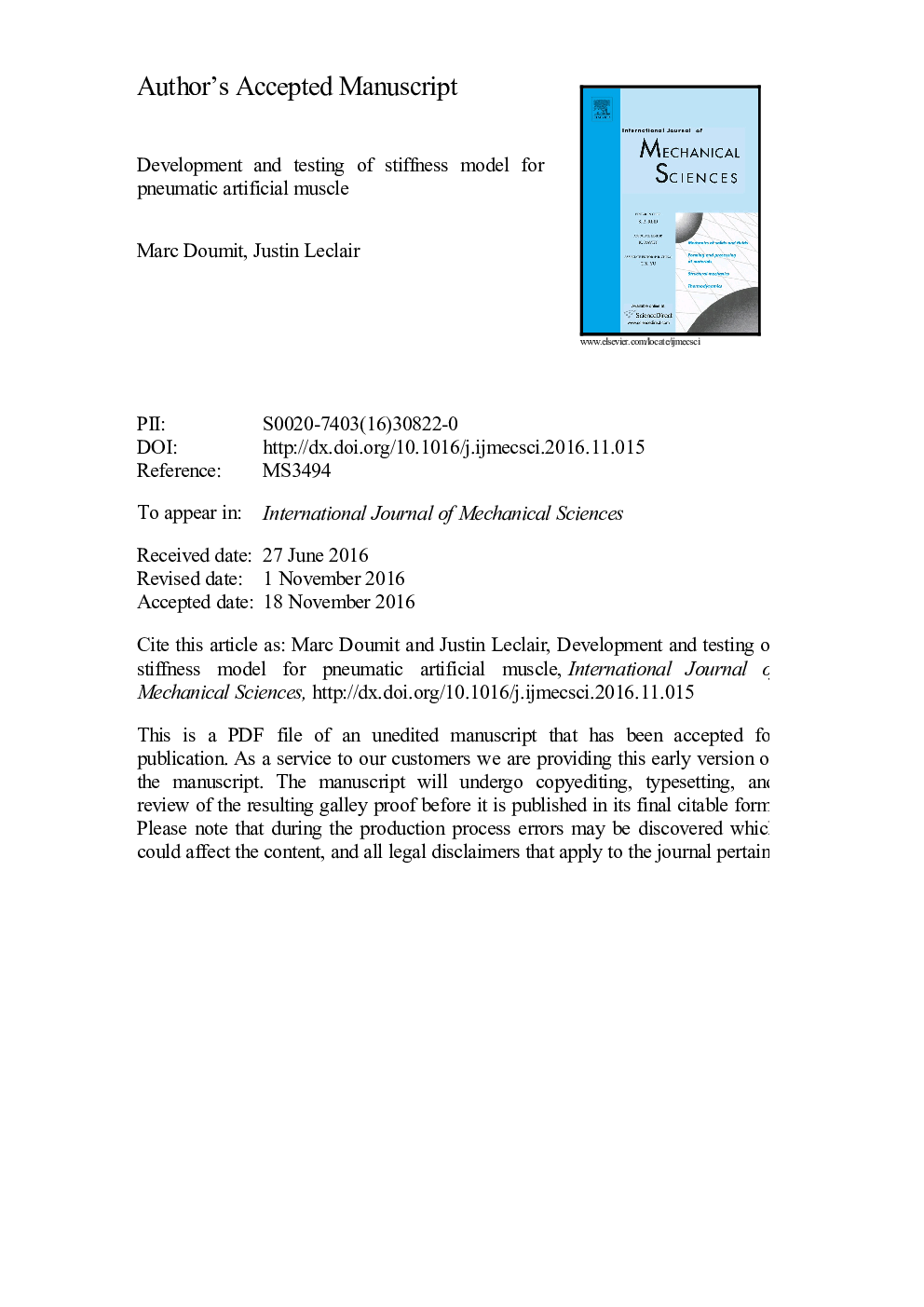| Article ID | Journal | Published Year | Pages | File Type |
|---|---|---|---|---|
| 5016262 | International Journal of Mechanical Sciences | 2017 | 22 Pages |
Abstract
Human mobility assist technologies currently rely on complex actuation system or on passive elastic elements to restitute mobility to individuals with motion impairments. These mobile technologies require actuators with a very high power-to-weight ratio such not to hinder their efficiency. One such actuator is the pneumatic artificial muscle (PAM), which consists of a soft elastic bladder, filled with air surrounded by a wire meshing. Whereas PAMs are generally used and modeled as active actuators, their use and model development in passive applications have been limited. The development and validation of a stiffness model would bridge the gap towards applying PAMs as passive components on assistive technologies. This paper presents the development of a stiffness model taking into account internal muscle pressure, muscle geometric parameters and friction in the muscle wall.
Related Topics
Physical Sciences and Engineering
Engineering
Mechanical Engineering
Authors
Marc Doumit, Justin Leclair,
